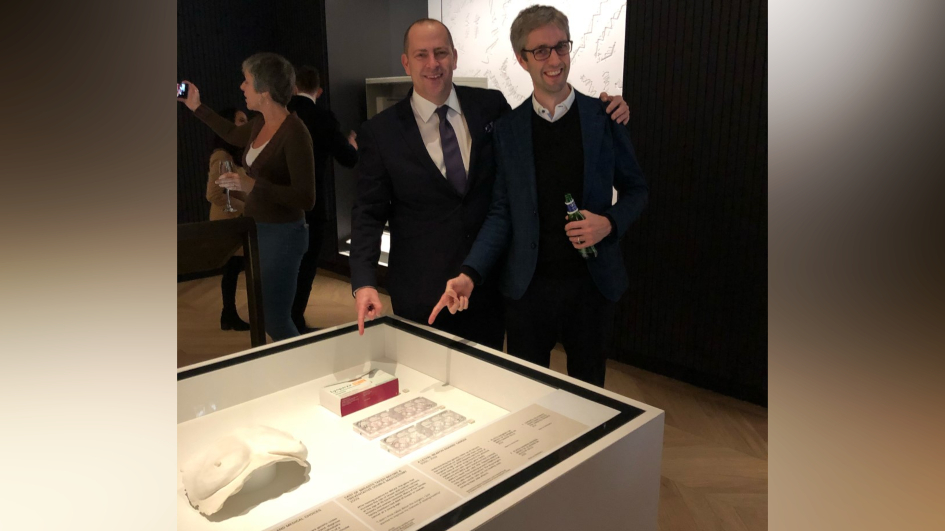
Image: Professor Chris Lord and Dr Stephen Pettitt next to the olaparib display in the Science Museum's medicine galleries
The Science Museum's new £24 million medicine galleries showcases pioneering research from The Institute of Cancer Research, London, as part of its story of modern medicine.
The new galleries, which have transformed the first floor of the world-famous museum, explore humanity's relationship with medicine and health through more than 500 years of history.
Included in the exhibition are extraordinary medical artefacts from the collections of Henry Wellcome and the Science Museum Group, including the world's first MRI scanner, Fleming's penicillin mould, a professional pianist's prosthetic arm and robotic surgery equipment.
Science Museum Lates are adults-only, after-hours theme nights that take place in the museum on the last Wednesday of every month. Medicine Lates was held on Wednesday 29 January.
Showcasing ovarian and breast cancer drug olaparib
The museum chose to showcase the ICR's pioneering research underpinning the development of targeted drug olaparib, which has transformed the lives of tens of thousands of women with breast and ovarian cancers.
Olaparib's origins lie in ICR research into the BRCA genes in the 1990s, when our scientists tracked down the BRCA2 gene.
A decade after the identification of BRCA2, ICR researchers found that targeting a DNA repair protein called PARP was a potential way to kill cancer cells with a faulty BRCA gene. This helped lead to the development of olaparib, and other so-called PARP inhibitors.
The gallery features plates which replicate the original ICR experiment to successfully show that olaparib specifically kills cancer cells with defects in their BRCA genes, while leaving healthy cells unaffected.
You can see these in the Medicine and Bodies gallery, which explores how the search to understand more about the human body has transformed medicine.
Displayed alongside Crick and Watson's molecular DNA model, the plates represent how understanding the genetic basis of cancer has transformed our ability to treat it through the creation of targeted therapies.
'We are immensely proud'
Professor Chris Lord, Deputy Head of the Breast Cancer Now Toby Robins Research Centre and Division of Breast Cancer Research at the ICR (pictured above), said:
"The fact that the Science Museum have chosen to highlight PARP inhibitors in their new gallery is a real testament to how cancer research can genuinely lead to improvements in the treatment of the disease. We are immensely proud of this, as are the other labs across the world who also contributed to these discoveries."
"Despite PARP inhibitors now being highlighted in Science Museum, this is not the end for us – we are still working very hard at the ICR to think about how we can improve the effectiveness of these drugs and to make sure that each patient receives the best possible treatment approach."
Daisy Henesy, the ICR’s Public Engagement Officer, said:
"It's a thrill to see the ICR's research showcased alongside other huge advances in modern medicine, and richly deserved.
"I urge everyone to visit the new Science Museum galleries and have a look for yourself – and don't forget to tweet us with any pictures @ICR_London and let us know what you think!"